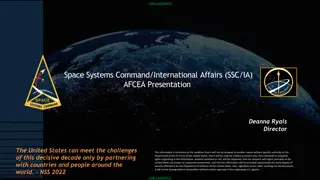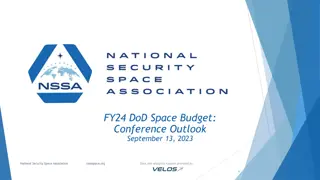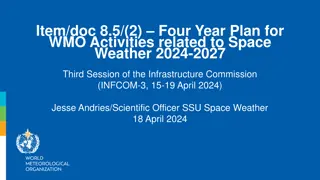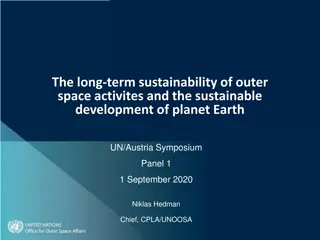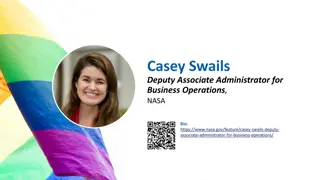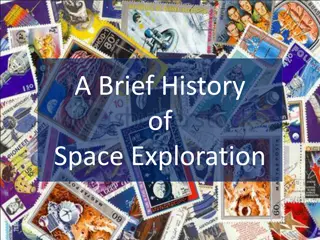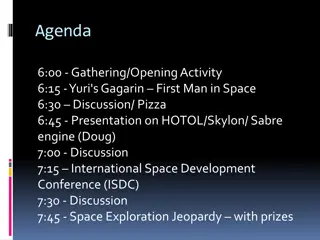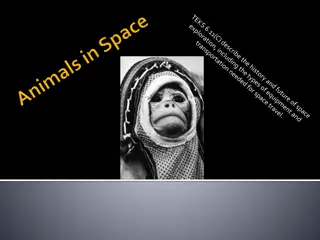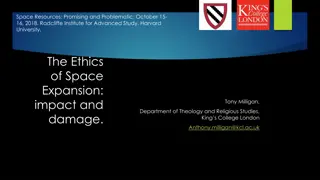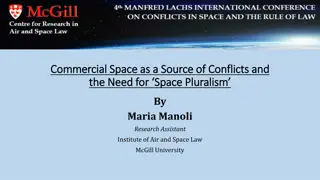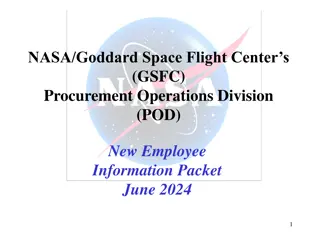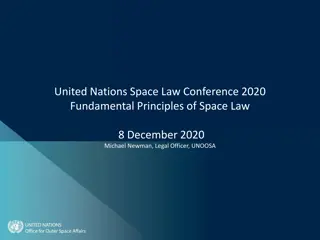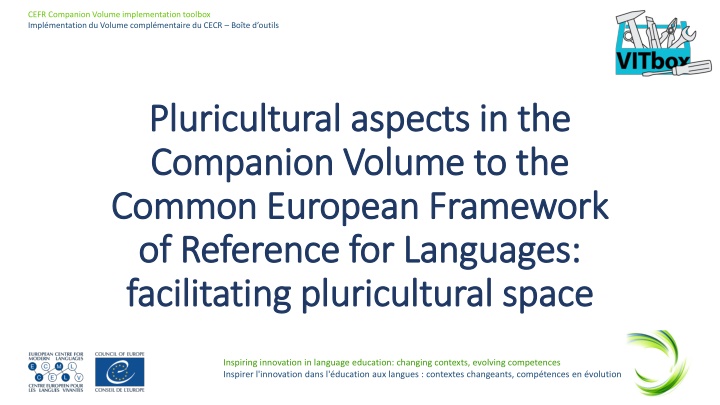
Facilitating Pluricultural Spaces for Intercultural Competence and Innovation
Explore the importance of pluricultural competence in creating a safe space for experiencing diverse cultures, enhancing intercultural understanding, and fostering innovation in language education. Learn how to navigate sociocultural and sociolinguistic differences, promote cultural sensitivity, and prevent misunderstandings through effective communication.
Download Presentation

Please find below an Image/Link to download the presentation.
The content on the website is provided AS IS for your information and personal use only. It may not be sold, licensed, or shared on other websites without obtaining consent from the author. If you encounter any issues during the download, it is possible that the publisher has removed the file from their server.
You are allowed to download the files provided on this website for personal or commercial use, subject to the condition that they are used lawfully. All files are the property of their respective owners.
The content on the website is provided AS IS for your information and personal use only. It may not be sold, licensed, or shared on other websites without obtaining consent from the author.
E N D
Presentation Transcript
CEFR Companion Volume implementation toolbox Impl mentation du Volume compl mentaire du CECR Bo te d outils Pluricultural aspects in the Pluricultural aspects in the Companion Volume to the Companion Volume to the Common European Framework Common European Framework of Reference for Languages: of Reference for Languages: facilitating pluricultural space facilitating pluricultural space Inspiring innovation in language education: changing contexts, evolving competences Inspirer l'innovation dans l' ducation aux langues : contextes changeants, comp tences en volution
Facilitating pluricultural Facilitating pluricultural space space We have to go back to the concept of intercultural competence, that is, the ability to experience and understand otherness and establish cognitive links between past and new experiences of otherness. Pluricultural competence is relatively independent of educational content (Coste, Moore and Zarate, 2009) but very much linked to beliefs and experiences. Pluricultural competence is fostered by positive experiences and the creation of a safe space where to experience other cultures is conducive to the acquisition of the competence. Creating a pluricultural space is not just building a repertoire as in the previous scale we examined, it is acting as a cultural mediator, who aims to facilitate a positive interactive environment for successful communication between participants of different cultural backgrounds, including multicultural contexts. Inspiring innovation in language education: changing contexts, evolving competences Inspirer l'innovation dans l' ducation aux langues : contextes changeants, comp tences en volution
Concepts in the scale Concepts in the scale The speaker, acting as a social agent, needs to be aware of the sociocultural and sociolinguistic differences to achieve their goal of broadening the intercultural understanding of the participants in the communicative act. The scale includes the following concepts: Using questions and showing interest promote understanding of cultural norms and perspectives between participants, demonstrating sensitivity to and respect for different sociocultural and sociolinguistic perspectives and norms, anticipating, dealing with and/or repairing misunderstandings arising from sociocultural and sociolinguistic differences. Inspiring innovation in language education: changing contexts, evolving competences Inspirer l'innovation dans l' ducation aux langues : contextes changeants, comp tences en volution
C levels: acting accordingly to the context and adjusting to prevent misunderstandings. Taking into consideration sociocultural and sociolinguistic differences to mediate and avoid misunderstandings and cultural incidents. C2: Can guide a sensitive discussion effectively, identifying nuances and undercurrents. B levels: introducing people and showing interest. Understanding different perspectives and being sensitive and flexible, facilitating clarification when needed to resolve a misunderstanding. B2: Can encourage a shared communication culture by expressing understanding and appreciation of different ideas, feelings and viewpoints, and inviting participants to contribute and react to each other s ideas. A levels: ability to contribute to intercultural exchanges by showing a positive attitude using verbal and non-verbal language. A2: Can contribute to an intercultural exchange, using simple words/signs to ask people to explain things and to get clarification of what they say, while exploiting a limited repertoire to express agreement, to invite, to thank, etc. Inspiring innovation in language education: changing contexts, evolving competences Inspirer l'innovation dans l' ducation aux langues : contextes changeants, comp tences en volution
If you want to know more If you want to know more Bavieri, L., & Beaven, A. (2021). Developing interpersonal and intercultural skills in a university language course. In: Language Learning in Higher Education, 11(1), 245-252. Byram, M. (1988). Cultural Studies in Foreign Language Education. Clevedon: Multilingual Matters. Coste, D., Moore, D., & Zarate, G. (2009). Plurilingual and pluricultural competence. Strasbourg: Council of Europe. North, B., & Piccardo, E. (2016). Developing illustrative descriptors of aspects of mediation for the Common European Framework of Reference (CEFR): A Council of Europe project. In: Language Teaching, 49(3), 455-459. Piccardo, E. (2019). Mediation for pluricultural competence: synergies and implications. Retrieved from: https://ecspm.org/wp-content/uploads/2019/04/Piccardo-Reading-20190321.pdf. Inspiring innovation in language education: changing contexts, evolving competences Inspirer l'innovation dans l' ducation aux langues : contextes changeants, comp tences en volution

![Read⚡ebook✔[PDF] Linking the Space Shuttle and Space Stations: Early Docking Te](/thumb/21519/read-ebook-pdf-linking-the-space-shuttle-and-space-stations-early-docking-te.jpg)
![READ⚡[PDF]✔ Emerging Space Powers: The New Space Programs of Asia, the Middle Ea](/thumb/21554/read-pdf-emerging-space-powers-the-new-space-programs-of-asia-the-middle-ea.jpg)


